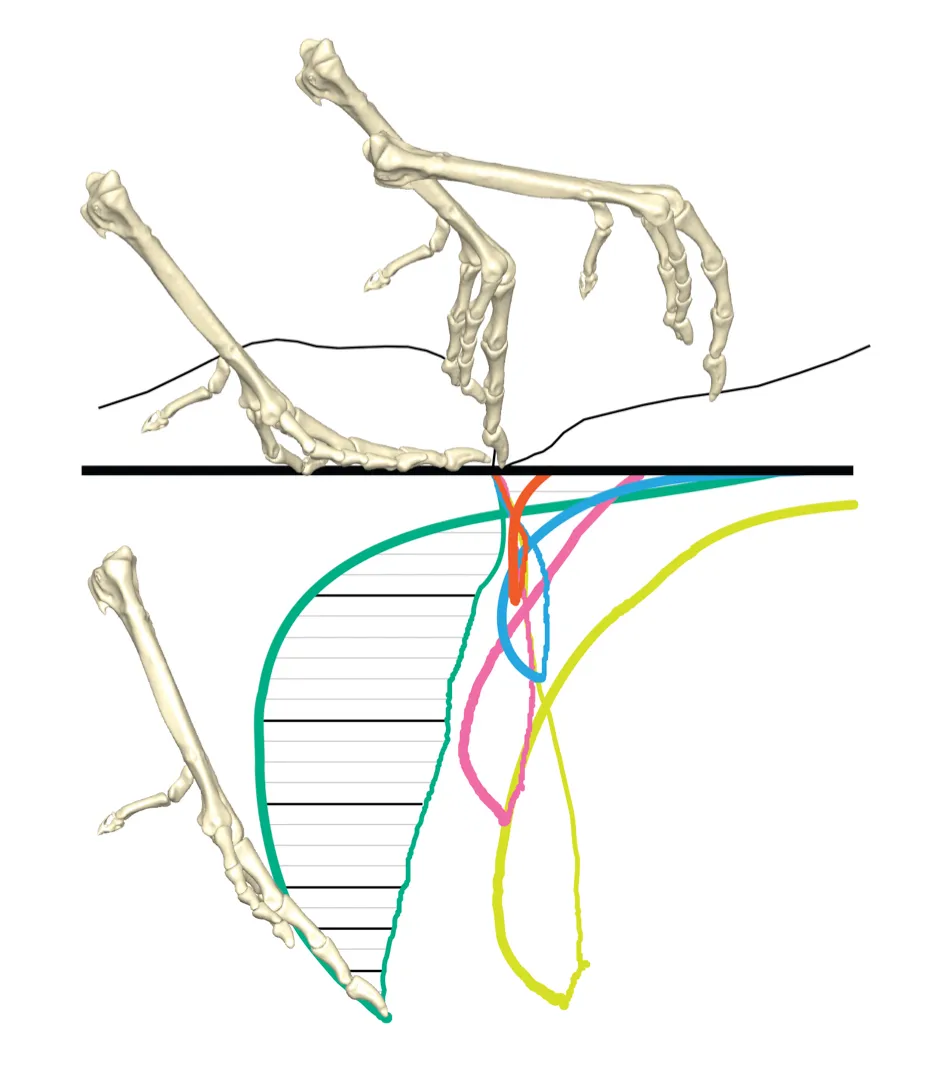Dinosaurs that lived around 200 million years ago may have moved in a way similar to guineafowls, despite having long and muscular tails, scientists believe.
Their research is based on an analysis of fossilised footprints of three-toed dinosaurs – called theropods – from the Early Jurassic period alongside the foot impressions of helmeted guineafowls.
The scientists believe their findings, published in the journal Biology Letters, offers a new way of studying ancient footprints.
Study author Dr Peter Falkingham, senior lecturer in vertebrate biology at Liverpool John Moores University, said: “Dinosaurs were moving in very similar ways to modern birds even 200 million years ago, many millions of years before birds evolved, even though they were quite different (long, muscular tails).”
Read more dinosaur discoveries:
- Cannibal dinosaurs may once have roamed late-Jurassic Earth
- Revealed: the last supper of an armoured dinosaur
- Asteroid impact ‘only plausible explanation’ for dinosaur extinction
Track marks made by three-toed species leave impressions deep into the surface layer, which can often be difficult to see.
So a team of experts, which included scientists from Liverpool John Moores University and Brown University, US, used x-rays to study the 3D motions of guineafowl feet and find out what happens below the surface.
Guineafowls were used in the study because they are flightless birds and their three-toed feet “closely resembles those of bipedal, non-avian dinosaurs, allowing the visible movements responsible for shallow tracks to be studied directly”.
The team observed guineafowls walking through a variety of surface textures, which included solid, granular, firm, and semi-liquid mud forms.
They found the feet of these birds to consistently move in a “looping pattern” deeper in the ground.
As the foot sinks below the surface and then withdraws, the claws of the three main toes create entry and exit paths in different locations, the researchers said.

The experts then analysed the fossilised tracks from nearly 200 million years ago, which according to Dr Falkingham, may have been made by a dinosaur like Compsognathus or Coelophysis – small theropods about the size of a chicken.
They found the dinosaur feet captured in the fossil record to have a “looping motion” that matched the guineafowls’.
The experts believe that ground-dwelling birds such as guineafowl may have retained some of the evolutionary features of their dinosaur ancestors.
Dr Falkingham said: “The similarity of motion, and the similarity of foot shape (three-toed) between dinosaurs 200 million years ago and birds today, tells us how successful and versatile that foot has been evolutionarily.”
Reader Q&A: How do dinosaur footprints get fossilised?
Asked by: Rob French, Sheffield
In 2018, over 80 dinosaur footprints were revealed at a site in East Sussex. They had survived for over 100 million years – and bear witness to the huge amount of luck involved in creating such fossils.
First, the creatures must step through sediment that is pliable enough to record their footprints, but not so pliable it gets washed away before being protected by fresh sediment. Each footprint then has three chances to become a fossil: as the original impression (the ‘true track’), as its fainter impression in the underlying layers (the ‘undertrack’), or by new sediment filling in the original impression (the ‘natural cast’) and hardening.
Either way, as the layers of sediment build up, the pressure turns them to rock which – given yet more luck – will preserve the print intact for aeons.
Read more:

